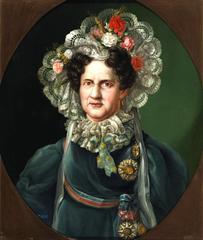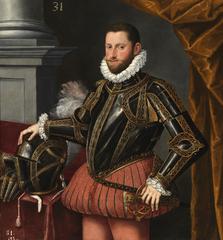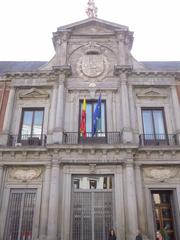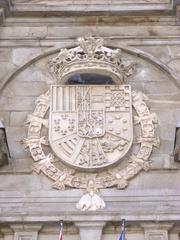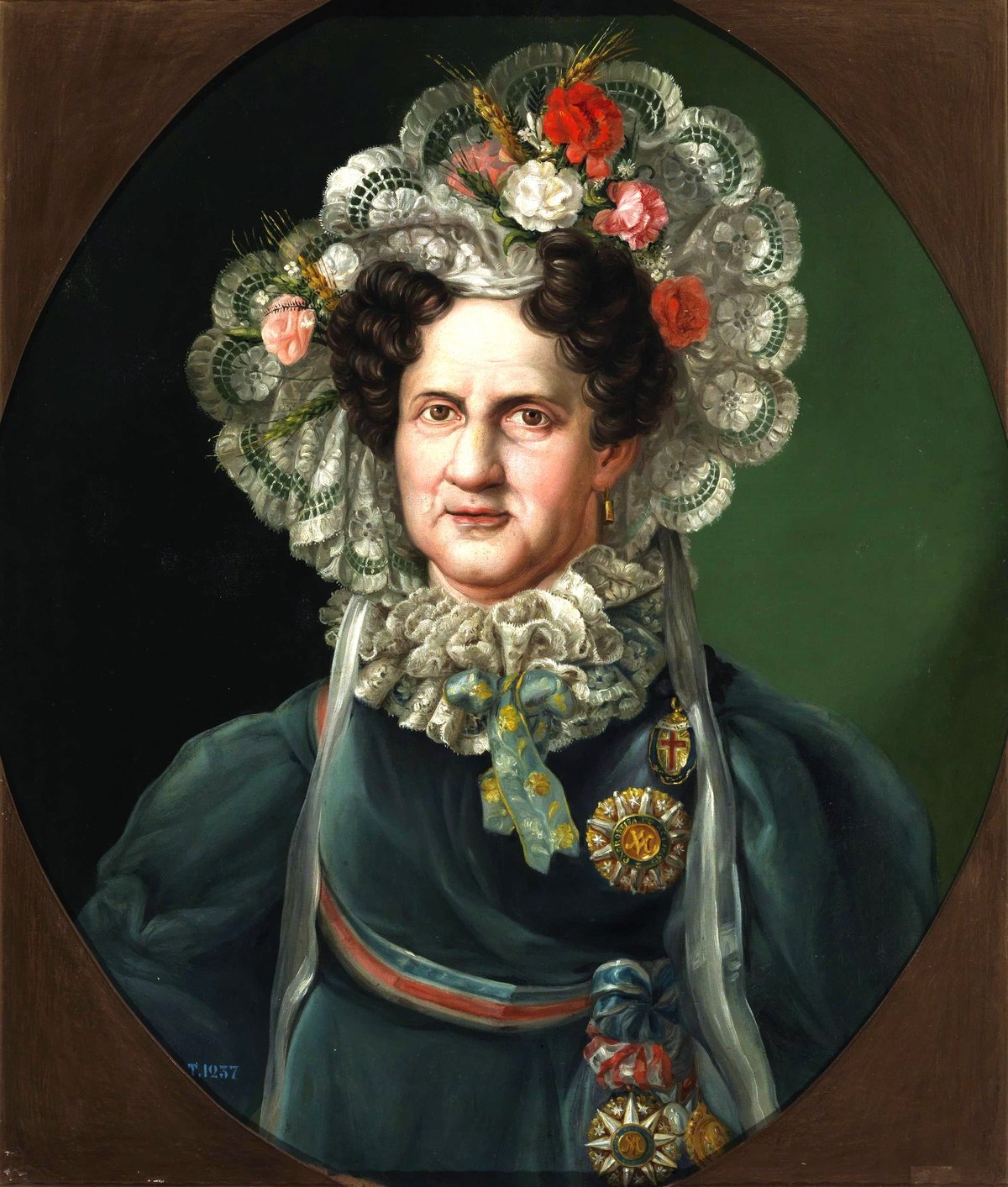
Santa Cruz Palace Madrid: Visiting Hours, Tickets & Visitor Guide
Date: 15/06/2025
Introduction
Located in the historic core of Madrid, the Santa Cruz Palace (Palacio de Santa Cruz) stands as an enduring emblem of Spain’s Baroque architectural legacy and its evolving political history. Built between 1629 and 1643 under King Philip IV and designed by Juan Gómez de Mora, the palace was originally commissioned as a court prison before becoming the seat of Spain’s Ministry of Foreign Affairs. While the interior remains closed to the public, the palace’s vibrant red brick façade, symmetrical towers, and slate spires make it a must-see landmark for visitors and architecture enthusiasts alike. Its proximity to Madrid’s iconic Plaza Mayor and Plaza de la Provincia further cements its status as a central feature of the city’s urban landscape.
This guide provides detailed and up-to-date information on visiting hours, ticketing (with details on access restrictions), architectural highlights, historical context, and practical travel tips for experiencing Santa Cruz Palace. Whether you’re an avid historian, art lover, or traveler, you’ll find valuable insights here to enrich your Madrid itinerary.
For official information, consult resources such as the Ministry of Foreign Affairs of Spain and local tourism portals like esmadrid.com.
Contents
- Introduction
- History and Evolution
- Architectural Highlights
- Role as a Court Prison
- Modern Functions and Preservation
- Visiting Information: Hours, Tickets & Access
- Travel Tips
- Nearby Attractions
- Cultural Significance
- Events and Public Engagement
- Representation in Art and Media
- Frequently Asked Questions (FAQ)
- Visuals and Maps
- Sources and Further Reading
- Summary and Final Tips
History and Evolution
Origins and Early Construction
Santa Cruz Palace was commissioned by King Philip IV and constructed between 1629 and 1643. Renowned architect Juan Gómez de Mora, a key figure of Spanish Baroque, designed the palace as the Cárcel de la Corte (Court Prison), not as a royal residence. Its location near Plaza Mayor placed it at the heart of Madrid’s judicial and administrative life (Lonely Planet).
Fire, Restoration, and Later Uses
A devastating fire in 1791 prompted a major reconstruction led by Juan de Villanueva, who preserved the Baroque essence while introducing Neoclassical elements. In the 19th century, the palace was renamed after the nearby Church of Santa Cruz and adapted for various administrative functions. By the late 1800s, it became the Ministry of Overseas Territories, reflecting Spain’s colonial interests. Since 1938, Santa Cruz Palace has housed the Ministry of Foreign Affairs, European Union and Cooperation (Ministerio de Asuntos Exteriores, Unión Europea y Cooperación). In 1996, it was declared a Bien de Interés Cultural, ensuring its preservation (BOE).
Architectural Highlights
A quintessential example of Spanish Baroque, Santa Cruz Palace is distinguished by its symmetrical red-brick and granite façade, slate spires, and ornamental towers. The main façade—facing Plaza de la Provincia—is adorned with classical details, while the twin towers and triple-arched entrance exude grandeur. The building’s style reflects the transition from the austere Herrerian tradition to a more decorative Baroque language (Patrimonio y Paisaje Madrid).
Role as a Court Prison
From its completion, the palace functioned as the main court prison in Madrid, housing criminals and political prisoners during the turbulent 17th century. It played a central role in judicial proceedings and public events—executions and royal proclamations often took place in the adjacent Plaza Mayor. This period established the palace’s reputation as a symbol of royal authority and justice (Wikipedia).
Modern Functions and Preservation
After the 1791 fire and subsequent restoration, the palace transitioned through various government uses. In the 20th century, it became the Ministry of Foreign Affairs, a role it still holds today. The building’s designation as a Bien de Interés Cultural ensures ongoing preservation. While public access is generally restricted, the palace remains a key feature of Madrid’s heritage and a highlight on many city walking tours (esmadrid.com).
Visiting Information: Hours, Tickets & Access
Exterior Viewing
- Access: The palace is not open for interior visits, as it is an active government building.
- Viewing Hours: The exterior can be admired at any time, 24/7.
- Tickets: No tickets or entry fees are required to view the exterior.
Special Openings
Occasionally, the palace opens for guided tours during heritage festivals such as Open House Madrid. For these rare occasions, advance booking is essential (Open House Madrid).
Location & Getting There
- Address: Plaza de la Provincia, 1, 28012 Madrid, Spain
- Metro: Sol (Lines 1, 2, 3), Tirso de Molina (Line 1)
- Bus: Multiple EMT lines serve the area
- On Foot: Just steps from Plaza Mayor and a short walk from Puerta del Sol and the Royal Palace (Madrid Tourist Info)
Accessibility
The surrounding plaza and streets are mostly flat and paved, suitable for visitors with mobility challenges, though some nearby streets have cobblestones.
Travel Tips
- Best Time for Photos: Early morning and late afternoon offer the best natural light and fewer crowds.
- Combine Visits: Pair your visit with nearby attractions such as Plaza Mayor, Real Casa de la Panadería, Mercado de San Miguel, and the Royal Palace.
- Safety: The area is busy and generally safe; take standard precautions against pickpockets.
- Guided Tours: While the interior is closed, many walking tours of Madrid’s historic center include the palace exterior and historical storytelling.
Nearby Attractions
- Plaza Mayor: Madrid’s famous square, bustling with activity, events, and history.
- Mercado de San Miguel: A lively market with gourmet tapas and regional delicacies.
- Royal Palace & Almudena Cathedral: Grand landmarks within a 10-15 minute walk.
- Literary Quarter (Barrio de las Letras): Charming streets filled with cultural sites, cafes, and bookstores.
Cultural Significance
Santa Cruz Palace is a landmark of Madrid’s civic and diplomatic identity. Its architecture set the standard for 17th-century civic buildings, while its evolving functions reflect Spain’s political and social transformations. As the headquarters of the Ministry of Foreign Affairs, the palace is at the heart of Spain’s international relations, hosting diplomatic receptions and historic treaty signings (Ministerio de Asuntos Exteriores, Unión Europea y Cooperación).
Events and Public Engagement
Though not regularly open to the public, the palace occasionally hosts art exhibitions, lectures, and special ceremonies during cultural festivals like Open House Madrid. These events offer rare opportunities to explore the building’s history and diplomatic legacy (Open House Madrid).
Representation in Art and Media
The palace’s iconic façade and towers have inspired artists, writers, and filmmakers, and feature prominently in official publications and tourism materials, reinforcing its role as a symbol of Madrid’s grandeur (Biblioteca Nacional de España).
Frequently Asked Questions (FAQ)
Q: Can visitors enter Santa Cruz Palace?
A: No, the interior is closed due to its role as a government building. Entry is possible only during rare public events.
Q: What are the visiting hours?
A: The exterior is accessible at any time, 24/7.
Q: Is there an entry fee?
A: No, viewing the exterior is free.
Q: Are guided tours available?
A: Many city walking tours include the palace exterior; interior access is only granted during special cultural events.
Q: How do I get to the palace?
A: By metro (Sol, Tirso de Molina), bus (EMT lines), or on foot from major landmarks.
Q: What else can I visit nearby?
A: Plaza Mayor, Mercado de San Miguel, Royal Palace, Almudena Cathedral, and the Literary Quarter.
Visuals and Maps
For images and maps, refer to official tourism sites and online photo galleries. Consider using interactive maps to plan your route and explore nearby attractions. Use keywords such as “Santa Cruz Palace Madrid exterior” and “Baroque architecture Madrid” for image searches.
Sources and Further Reading
- Lonely Planet – Palacio de Santa Cruz
- Patrimonio y Paisaje Madrid – Palacio de Santa Cruz
- Ministerio de Asuntos Exteriores, Unión Europea y Cooperación
- esmadrid.com – Palacio de Santa Cruz
- Open House Madrid
- Wikipedia – Santa Cruz Palace, Madrid
- BOE – Bien de Interés Cultural declaration
- Must See Spain – Madrid Travel 2025
Summary and Final Tips
Santa Cruz Palace remains a vital piece of Madrid’s historical and cultural tapestry. While visitors cannot enter, the palace’s grand Baroque façade and central location offer a vivid encounter with Madrid’s past. Enhance your visit by joining a guided walking tour, exploring nearby sights, and consulting official sites for news of special open days.
For more in-depth travel advice, download the Audiala app for audio guides and interactive maps, and follow us on social media for the latest updates on Madrid’s historical highlights.
